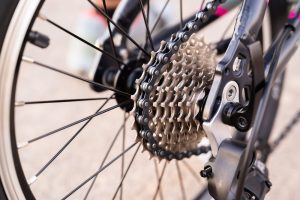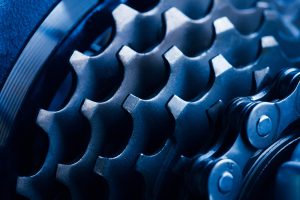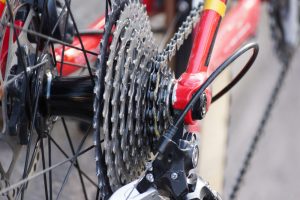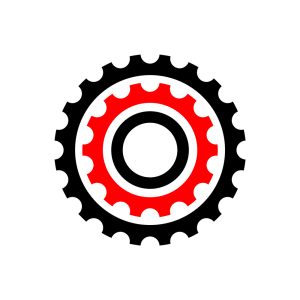
The benefits of e-bikes are many and varied. They offer a great way to keep fit, lose weight, improve your fitness levels and get around the city or countryside more easily. The bike is also an excellent mode of transport for people with disabilities as it can help them get about more easily than they could on foot. As well as this, electric bikes have become increasingly popular with commuters who use them to save money on their daily commute and make trips to work more enjoyable.
Use the gears effectively to get the best e-bike experience. The pedaling effort is manageable by multiple gears, and it determines the e-bike’s speed. You should make sure the battery lasts longer so you can travel greater distances in your e-bike.
Below are a few methods to save your e-bike battery life.
Not shifting gears when stationary

This means you shouldn’t shift up or down when the bike stops. It is also important to note that this rule does not apply if your bike has an automatic gear system. Gears will be beneficial when you are switching terrains. Shifting the gears when your bike is stationary can take up most of your battery. Also, it can cause damage to your gears and chainrings, causing them to wear out faster than they would normally do.
Before stopping, change to a low gear

You can shift to a lower gear before you stop the e-bike. This is useful if you want to make sure the motor doesn’t run out of power and stops when it reaches its maximum speed. You should also use this mode if you are riding on a hill or in an area where there are lots of obstacles that could potentially cause the motor to slow down unexpectedly. Note: If your battery has very little power left, then shifting into a lower gear will not be enough to keep the motor from slowing down and stopping.
Prepare for the environment

The best way to save the battery is to ride in low gear. This will allow you to pedal at a lower RPM and thus use less power. If you are riding on flat terrain, then your speed should be about 8-10 MPH (15-20 Km/h). If you have hills or steep inclines, then it would be better if you shift down one gear. The higher the hill or incline, the more gears it would require for pedaling up that hill. Use the proper gear for the environment.
Avoid shifting too fast
Don’t shift too quickly, or you may get a “shift shock”. This is when the bike shifts into neutral before it should have and causes the engine to stall out. It can be caused by not shifting smoothly, but also if you are using a very low gear ratio (i.e., 1st gear). If this happens while riding at highway speeds, it could cause an accident.
Use lights at night
When there is less traffic you don’t have to use as much power to illuminate your surroundings – this will also help with reducing the amount of time you are using them. This is especially important if you are trying to reduce CO2 emissions from your bike.
More about e-bike gears

A gear is a part that meshes with the chain and/or sprocket, which connects to the rear wheel. The gears allow you to pedal faster or slower, depending on how they are set up. A bike with many gears allows you to change your speed by changing which gear you’re in. You can also use gears for hills and going downhill, as well as for climbing hills or when riding in hilly areas.
How does E-BIKE CADENCE work?

E-BIKE CADENCE uses the magnet in the pedal axle that connects the pedal crank arm to the bicycle frame. When you step down on your pedals, this magnet moves along a scale printed on the bottom of each pedal (see image below). The higher up on this scale your footsteps when you step down on your pedals, the faster they are turning.
How do I know if my bike has an internal hub or an external one?

A standard bicycle has an internal gear hub that connects to the crankset via a chainring and sprocket combination. An external gear hub connects directly to the crankset via gears which are then attached to sprockets that connect to chainsets.
Internal hub – the disc is attached to the axle via a splined shaft. This allows you to remove the wheel and replace it with a new one, as long as you have an internal hub-compatible wheel in your garage.
External hub – the disc is attached to the axle via a quick-release skewer. You will need an external-hub-compatible wheel for this type of bike if you want to change wheels without removing them from their frame.
E-bike market and the motor

The e-bike market is growing at a rapid pace. According to the International Bicycle Market Association (IBMA), the global e-bike market was estimated to be worth $23.7 billion in 2015, and it is expected to grow by 12% annually over the next five years. The European Union has set a target of 10% for its share in this market by 2020, and China’s government aims to increase its share from 5% currently to 20%.
There are many different types of electric bikes on the market, and each one offers something different. E-bikes offer more assistance than ever before, but they’re not for everyone. If you don’t have a lot of experience riding an e-bike, check out a few tips before you try one out for the first time. These general guidelines will apply to almost every bike on the market today but feel free to ask your local retailer about specific models that may be better suited to your needs. Keep in mind that some e-bikes require premium batteries while others are designed to accommodate less powerful batteries.
The motor is the most important part of the bike and it will be responsible for your fun. The good thing is that you can customize the motor with different power levels. As you can choose an electric bike according to your needs, it means that you can ride with no fear of getting bored with the bike. It also depends on the motor as well because some are designed to deliver more speed.
It is usually powered by a battery, but it can also be powered by the engine of an e-bike. E-bike motors are available at different speeds and power levels to suit your needs. The speed at which you pedal determines how fast your bike will go. You can choose from low, mid, or high-speed e-bikes depending on what you want for yourself and your riding style.
E-bike battery analysis

An e-bike battery is a rechargeable lithium-ion battery. It’s the power source that powers your e-bike. The most common type of electric bike batteries are Lithium Ion (Li-Ion) batteries, which have several advantages over traditional lead acid batteries: they weigh less, can be charged and discharged more times than their lead-acid counterparts, and can provide greater energy density for longer periods.
There are three main factors to consider when choosing a battery for your e-bike: capacity, weight, and price. The higher the capacity, the more power your e-bike will have. However, larger batteries also weigh more and cost more than smaller ones. So you need to balance these two factors against each other to find the best solution for you.
The e-bike battery capacity determines how much power it can deliver, so make sure that you choose a battery that fits in your bike frame. For example, if you have an electric bicycle with a 20-inch wheel then choosing a 36-volt battery means that your bike will have extra space for more cargo or maybe even luggage racks on top of the rear rack! If this isn’t something important to consider then just go ahead and get yourself one of these great batteries.
The weight of an e-bike battery is important because it affects how much weight your bike can carry before it becomes too heavy or difficult to ride up hills with. The price of e-bike batteries is different from one brand to another. The most important things you should consider when buying an e-bike battery are power, safety, and quality. That means that you will not have to wait long before you can ride again.
You do not need to worry about your batteries dying on you while riding because they are removable and easy to replace.
Conclusion:

Don’t change the gears while stationary. This means that when the bike is stationary, you shouldn’t be shifting up or down. It’s also crucial to remember that if your bike has an automatic gear system, this regulation does not apply to you. When switching terrains, gears will be helpful. When your bike is motionless, shifting the gears might use up most of your battery. Additionally, it may harm your chainrings and gears, leading them to wear out earlier than usual.
Before stopping the e-bike, you can downshift. If you want to ensure that the motor doesn’t lose power and shut off when it reaches its top speed, this is helpful. Use this mode if you are riding on a slope or in an area with plenty of obstacles because doing so could potentially cause the motor to suddenly slow down. A lower gear may not be sufficient to prevent the motor from slowing down and halting if your battery has very little remaining power.
Riding in low gear is the greatest method to preserve the battery. As a result, you can pedal more slowly and save energy. Your pace should be around 8 to 10 MPH (15 to 20 Km/h) if you are cycling on flat terrain. It would be best to downshift one gear if there were any hills or sharp inclines. Utilize the right equipment for the surroundings.
Avoid shifting too quickly to avoid experiencing “shift shock.” This occurs when the motorcycle switches into neutral earlier than it should have and the engine stalls. It may result from jerky shifting or from utilizing a gear ratio that is too low (i.e., 1st gear). If this occurs while traveling down a highway, it can result in a collision.
You can use less power to brighten your surroundings when there is less traffic, which will also help you use them for shorter periods. This is crucial if you want to lower the CO2 emissions your bike produces.
You could also extend your electric bike battery life to make sure that you are using the right gear. The most important thing you can do for your electric bike battery is to use the correct gear ratio and cadence for your e-bike. This will ensure that you are getting the maximum power from your motor and maximizing its efficiency.
A lithium-ion rechargeable battery powers an e-bike. Your e-bike is propelled by its power source. Lithium Ion (Li-Ion) batteries, the most popular kind of electric bike batteries, have several advantages over conventional lead acid batteries: they weigh less, can be charged and discharged more frequently, and can give more energy density for longer periods.
The motor is the most crucial component of the bike and will determine how much fun you have. The ability to adjust the motor with various power levels is a plus. The motor will balance the battery level when it is running. Make sure the motor runs well without any faults.
When selecting a battery for your e-bike, you should primarily take the capacity, weight, and cost into account. Your e-bike will have more power the bigger the capacity. Larger batteries do, however, cost more and weigh more than smaller ones. To find the optimal answer for you, you must balance these two criteria against one another.
What is a Gear Ratio?

A gear ratio e-bike is a type of electric bike that can change gear ratios. This means you can have different speeds and gears to ride uphill or downhill. The motor will automatically adjust itself depending on your riding style.
How do I know if an e-bike is safe?

There are many things that you should consider before buying an e-bike for yourself, such as: how much weight it can carry, what kind of battery it uses and how fast it goes. You need to be sure that the bike you want to buy is safe enough for your needs because there are many accidents.
What does a good gear ratio look like?

A good gear ratio for most riders would be around 1:1 or less (e.g., 50/34). If you are riding longer distances, you may want to consider going up one size in gear (e.g., 52/36). This will give you better range and save you some weight on your bike too!
Why an e-bike?

The e-bike is a great way to get exercise and stay healthy. It also helps you save money on gas, car maintenance, and parking fees. You can ride a bike anywhere! There are no limitations on where you can ride your e-bike as long as there is an electric outlet nearby. The most important thing is the battery of the electric bike, which can be charged by solar power or electricity. When compared to other types of bikes, it has a significant benefit in that it can operate without being plugged into any electrical outlets and that you don’t need to stop charging when you get weary because the battery charges completely in just 3-5 hours. Choose the best e-bike for your needs, different models suit different people.
